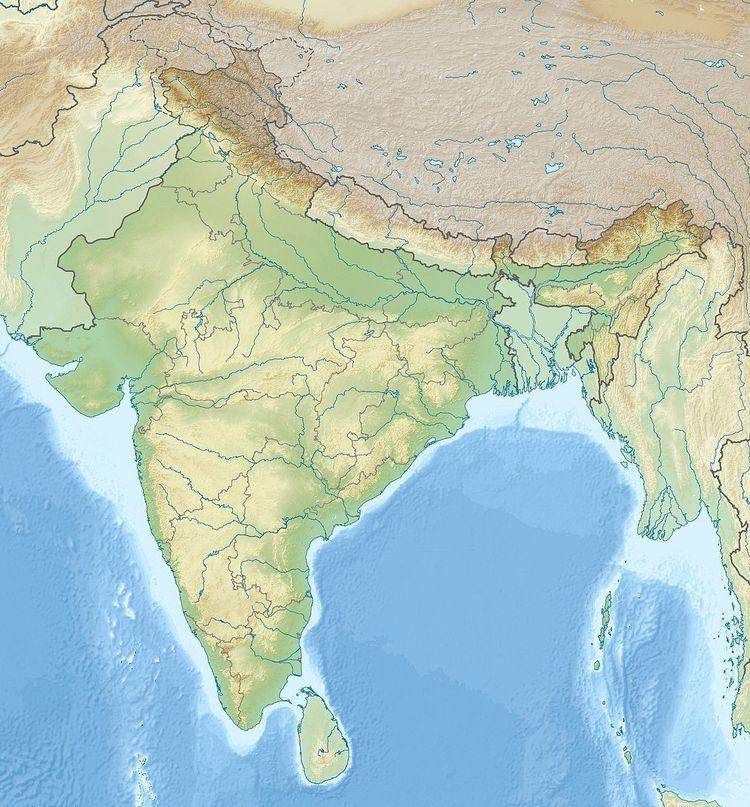World Heritage Site Since 2012 Area 351.2 km² Established 1958 | Type Natural Phone 096041 13743 | |
 | ||
Address New Ambani Temple, Main Road, Radhanagari, Maharashtra 416212 Hours Open today · 7:01AM–2PMThursday7:01AM–2PMFriday7:01AM–2PMSaturday7:01AM–2PMSunday7:01AM–2PMMonday7:01AM–2PMTuesdayClosedWednesday7:01AM–2PMSuggest an edit Similar Radhana Wildlife Sanctuary, Paradise Jungle Resort, Hotel Neelam's Countrysi, Mahalaxmi Temple, Hotel Jivhala Mountain | ||
Radhanagari wildlife sanctuary kolhapur
Radhanagari Wildlife Sanctuary is a wildlife sanctuary and natural World Heritage Site of category ix and x since 2012, located in Kolhapur , Maharashtra state India. It lies at the southern end of the Sahyadri hills in the Western Ghats. It is notable as the first declared wildlife sanctuary in Maharashtra, notified in 1958, as Dajipur Wildlife Sanctuary and is popularly known as the "''Bison Sanctuary''". Indian bison or gaur (Bos gaurus) with a population around 1091 in 2014, is the flagship species of the area.
Contents
Geography
This is a natural World Heritage Site notified by UNESCO as Sahyadri sub cluster of Western Ghats. The sanctuary is located between 16°10‟ to 16°30‟ north latitude and 73°52‟ to 74°14‟ east longitude. The Krishna River tributaries; Bhogavati River, Dudhganga River, Tulshi River, Kallamma River and Dirba River flow through the sanctuary area. State Highway 116 passes through the center of the sanctuary. it is located in shyadri ranges
Flora
Radhanagari Wildlife Sanctuary contains tropical evergreen forests typical of the northern Western Ghats. 425 species of plants have been recorded in the sanctuary. The main species found over here are Anjani, Jambul, Hirda, Awala, Pisa, Ain, Kinjal, Amba, Kumbha, Bhoma, Chandala, Katak, Nana, Umbar, Jambha, Gela, Bibba and banana. Karvi is found over almost the entire area.
Climbing plants such as shikekai and garambi are common. Shrub species and medicinal plants such as karvand, vagati (candy corn plant), ranmiri (orange climber), tamalpati, (toran), dhayati (fire-flame bush), kadipatta (curry tree), narkya, murudsheng (Indian screw-fruit) and a small amount of bamboo are also found. Large numbers of ephemeral bulbs of seasonal plants are also found here. Many sacred groves or devrais have been protected as a result of the efforts of the local communities.
Fauna
Sanctuary contains 47 species of Mammals, 59 species of reptiles, 264 species of birds and 66 species of butterflies. Amphibians are most visible in the rainy season. 20 species from 2 orders, 5 families and 10 genera are listed in the sanctuary.
Indian bison or gaur (Bos gaurus) with a population around 610 in 2004, is the flagship species of the area. Other mammals, living in the sanctuary are Indian leopard (5), sloth bear, wild boar (80), barking deer (140), mouse deer (80), sambar (120), giant squirrel 50) and wild dogs (70). In recent years, 6 to 12 tigers were reported in Dajipur forest 2007-08. (anonymous reports- not yet confirmed)
Birds seen here include: vultures, eagles, jungle fowl, quails, plovers, sandpipers, owlets, doves, owls, nightjars, kingfishers, bee-eater, hornbills, woodpeckers, bulbul, flycatchers, warblers, wagtails, sunbirds are commonly seen.
This sanctuary is designated as an Important Bird Area by BirdLife International and is home to the rare and globally threatened Nilgiri wood-pigeon (Columba elphinstonii). Other species found here include the Ceylon frogmouth, yellow-browed bulbul, dusky eagle-owl and great pied hornbill and one of India's most admired songbirds, the Malabar whistlingthrush. Two species endemic to the Western Ghats: the small sunbird and the Malabar grey hornbill have been sighted here. This sanctuary is a favorite nesting place for the speckled piculet, Malabar crested lark, and some species of Himalayan birds such as the Indian blue robin during the winter months.
Threatened species of reptiles and amphibians seen in this sanctuary include: Malabar pit viper, Deccan ground gecko, Gunther's cat skink, Beddome's lacerta, Bombay bush frog and Humayun's wrinkled frog.
Threats
Open cast bauxite mining has been a serious threat to this protected area. In February 1998, the Bombay High Court passed a stay order halting bauxite mining operations in the Iderganj plateau. Other threats include, irrigation projects, encroachment of forest land, poaching, over grazing, agriculture and construction of reservoirs.
Visitor information
The nearest rail station is at Kolhapur, 45 km (28 mi). For accommodations, there is a forest rest house, dak bungalow, and a dormitory managed by the Deputy Conservator of Forests - Wildlife, Bindu chowk, Ganji Galli, Kolhapur. 416 002 India ( 91-231-2542766)
